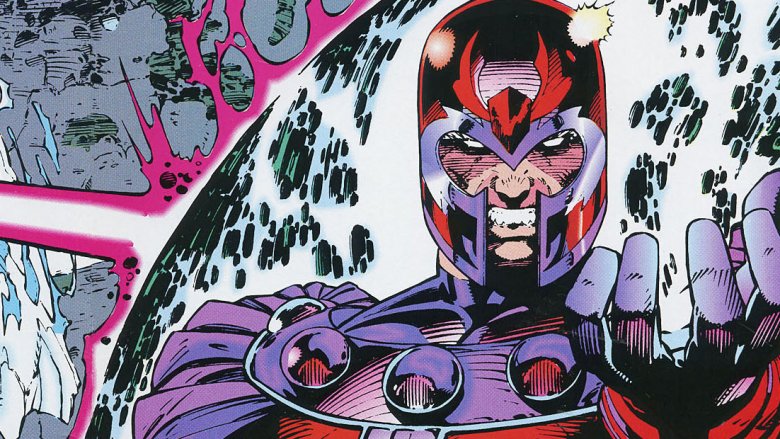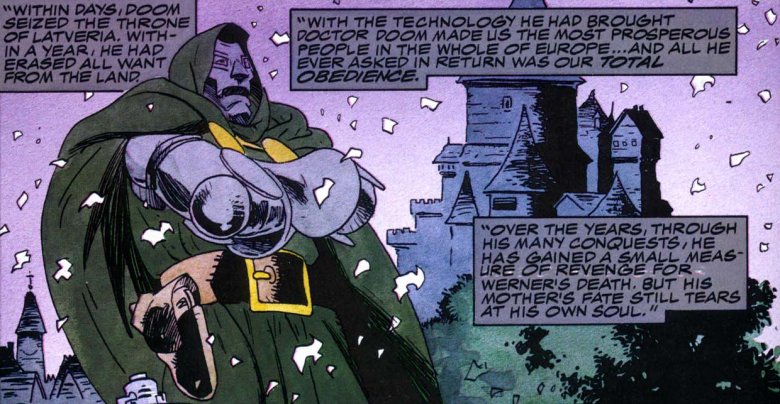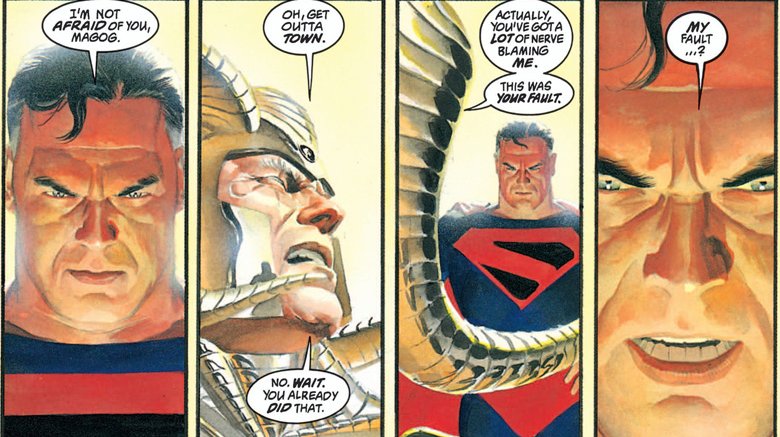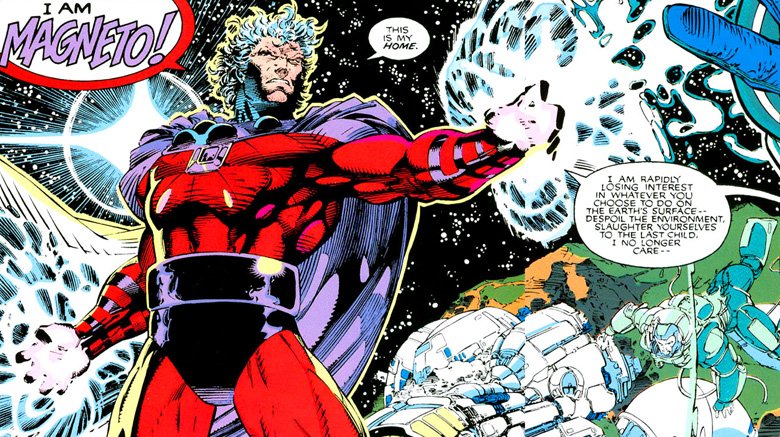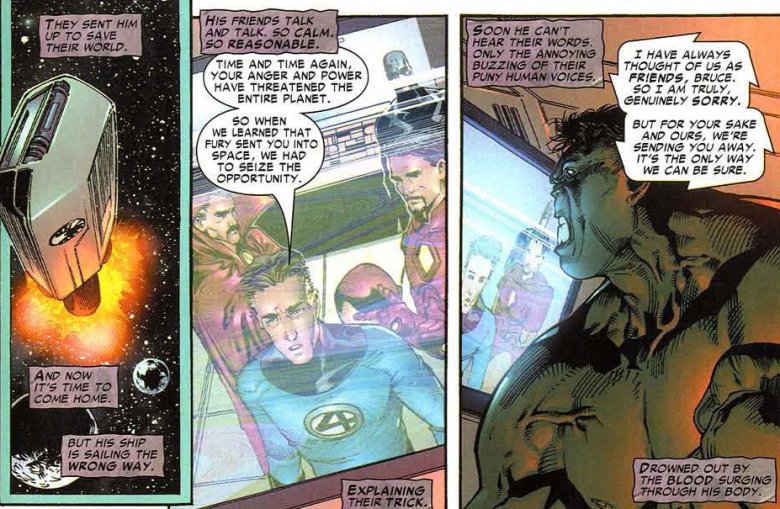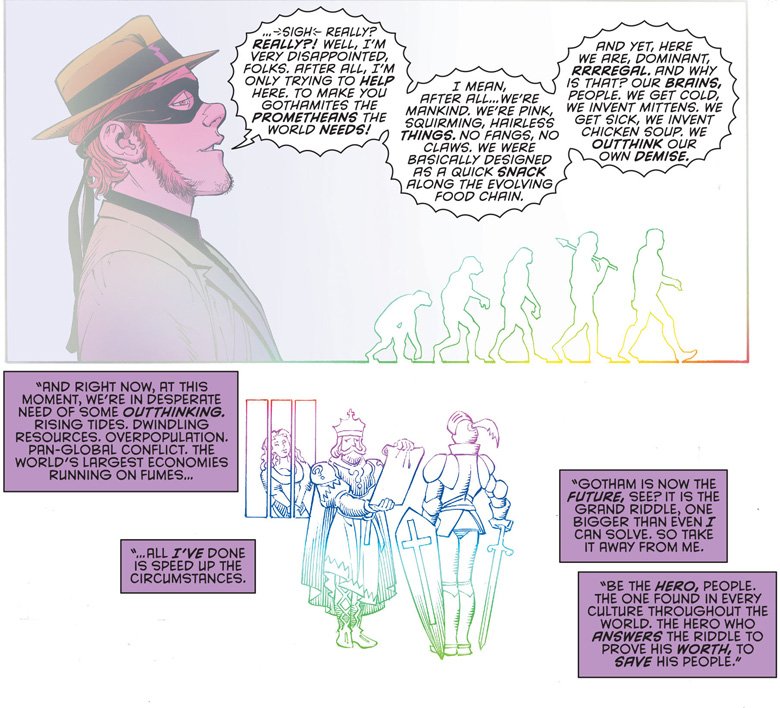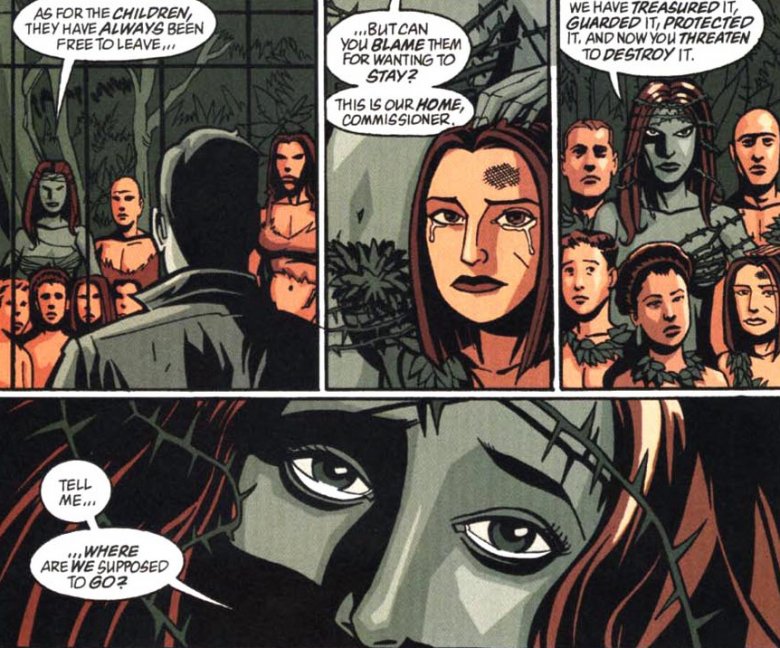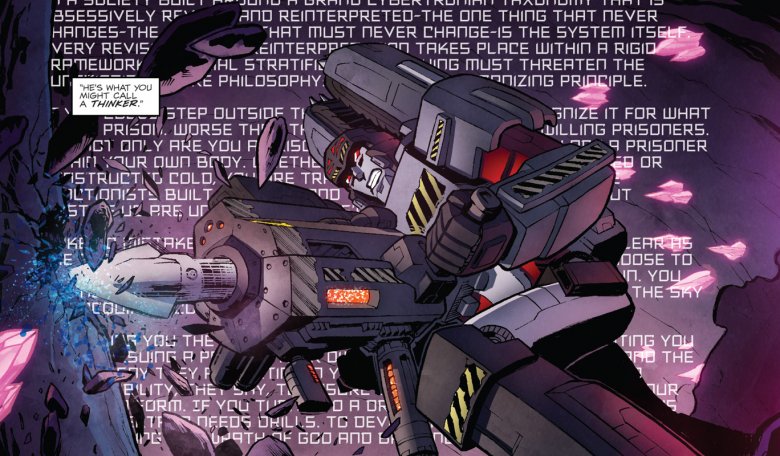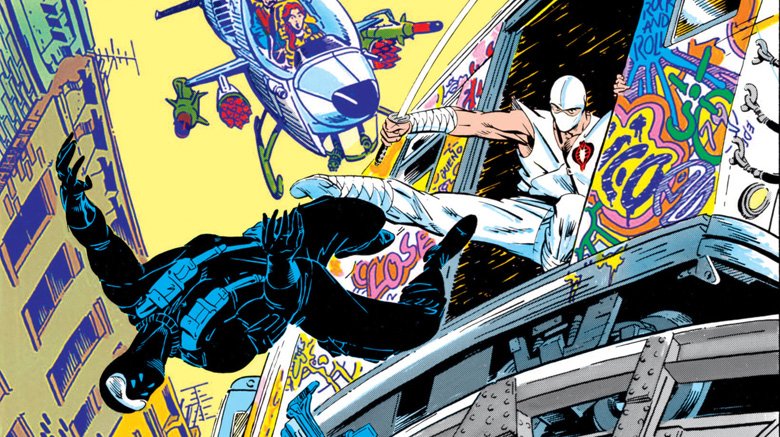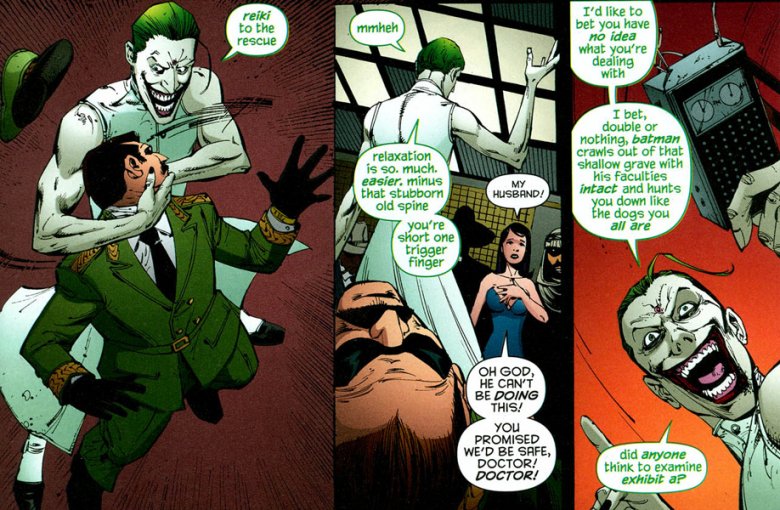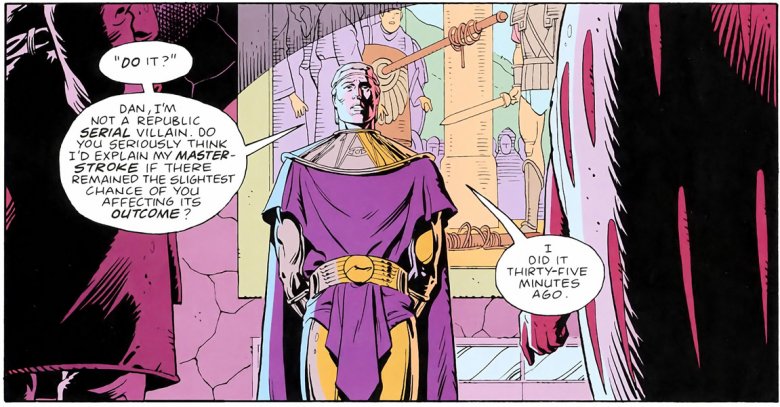Times The Bad Guys In Comics Were Actually Right
One of the most well-known tricks in writing is that the best villains are the ones who truly believe they're right, and can even make a pretty compelling case for it before they get into all the evil deeds and murdering that makes them villains. Every now and then, though, you find a bad guy who goes one step further than just believing, and find one who's actually right.
Whether they find a fundamental truth for selfish reasons, try to justify a good end with evil means, or just plain make a good point, it happens more often than you might think. Read on, and find out about some of the most memorable times that comics villains were actually right.
Dr. Doom saves his mother from the eternal suffering of Hell
If there's one villain that embodies the idea of truly believing he's right more than any other—even when he clearly isn't—it's Dr. Doom. In fact, considering that he was smart enough to invent a time machine, strong enough to go toe-to-toe with the Avengers, and good enough at magic that he's second in line for the title of Earth's Sorcerer Supreme, it's actually not hard to believe that he could actually make the world a better place if the so-called "heroes" of the Marvel Universe would just let him run things for a while. Well, until you remember that former Fantastic Four writer Mark Waid once said that Doom would eat a baby's head like an apple if he thought it would hurt Reed Richards. There's one thing you have to give him, though: at least one of his motivations is pretty pure.
For years, everything Victor Von Doom did—studying magic, conquering Latveria, even building the machine that would literally blow up in his face and make him a lifelong enemy—was devoted to the single goal of finding a way to release his mother Magda's soul from Hell. And in the pages of Roger Stern, Mike Mignola, and Mark Badger's epic Doctor Strange and Doctor Doom: Triumph and Torment, he finally did it.
The twist, of course, is that his plan involved teaming up with Dr. Strange to confront Mephisto, and then selling him out by offering to swap Strange's soul for Mama Doom's. The thing is, Magda refused to sentence an innocent to eternal torture, even to get herself out, and rejected her son forever for trying to free her with an act of evil. At the end of the book, though, there's a double twist. In rejecting Doom's offer of salvation, Magda purified her soul and freed herself, and it turns out that was Doom's plan all along. In the story, it's mentioned that he did it so he could accomplish his goal and free himself from the "burden" of his mother's love. It's cold, calculated, and tragic, but it got his mom out of Hell without actually damning Dr. Strange's soul in the process, and that's a net positive.
Magog commits a pretty understandable murder
One of the most well-regarded comics of the '90s, Mark Waid and Alex Ross's Kingdom Come tells the story of Superman coming out of retirement to reform the Justice League and help save a world that's gotten immeasurably worse in his absence. That retirement, however, is one that's entirely self-imposed. You probably could've guessed that, though—he's Superman. It's not like he's going to blow out his knee and go open up a car dealership, and the Never-Ending Battle for Truth, Justice, and the American Way isn't the kind of career that hands out a gold watch and a trip to Florida after 20 years of service. Instead, Superman, a little grayer but still extremely powerful, chose to go into retirement after becoming disillusioned by a new generation of heroes.
The particular problem was Magog, a character Waid and Ross patterned after gun-toting early '90s badasses like Cable, and while he's not exactly Kingdom Come's villain, he's definitely presented as an antagonist. After Superman apprehended a villain, Magog dropped in and vaporized him, getting cheered for his actions by the public and leaving Superman feeling disheartened and unwanted, abandoning the world to its own devices.
Oh, and that villain Magog killed? The friggin' Joker. Who had just killed 93 people in one day, including Jimmy Olsen and Lois Lane. Even if you don't agree with his methods, can we maybe agree that this one time, it's probably not that big a loss?
Admittedly, Magog would later be directly responsible for accidentally blowing up Kansas, but if Superman had stuck around to provide a good example for the heroes of tomorrow rather than just heading to the Arctic for a ten-year pity party, maybe that wouldn't have happened.
Magneto just wants to be left alone
Magneto has been right about things so many times that characters wearing "Magneto Was Right" t-shirts has been a running gag in X-Men comics since about 2001. It's easy to see why, too—as much as he might occasionally sink a nuclear submarine with all hands aboard or launch an attack with the Brotherhood of Evil Mutants, it's hard to blame him when the other side keeps building giant purple robots made of racism.
In the early '90s, however, Magneto came up with what really does seem like a pretty solid solution to his problem. Realizing he'd never be able to make a mutant homeland on Earth, he instead created Avalon, an orbital fortress made out of an asteroid—his second orbital asteroid fortress, for those of you keeping track at home—and invited any mutants who wanted to leave Earth to join him. What's more, he declared that even the ones left back on Earth should still consider themselves under his protection, should they need it. It was a pretty generous offer, and really felt like a win for everyone.
Unfortunately, having an orbital city-state led by an occasional terrorist who once led a gang who literally referred to themselves as "Evil Mutants" didn't sit well with the governments back on Earth, especially once he acquired some nuclear weapons in the interest of self defense. Still, it was a nice dream while it lasted. And hey, if you ever need another example of Magneto being right about something, don't forget the time he dropped the Red Skull in a fallout shelter and left him to starve to death. Mutant or human, we can all agree that it's never the wrong time to condemn an unrepentant Nazi to a slow and painful death.
The Illuminati give the Hulk exactly what he wants
Speaking of characters who just want to be left alone, that's exactly what the Hulk has claimed to want for years. And yet, when someone finally gave it to him, he got all mad. That's honestly not surprising, though. Getting mad is what that dude does.
Still, it felt like a solid plan. After finally getting tired of watching Bruce Banner's alter ego go on a rampage, the Illuminati—a secret cabal made up of the Marvel Universe's most powerful minds, including Iron Man, Black Bolt, Professor X, Namor, Reed Richards, and Dr. Strange—decided that maybe he should just go on a permanent time out. Thus, they tricked him into getting on a spaceship, wished him well in his future endeavors, and fired him off to a nice planet where he could be by himself.
Except that's not what happened. Instead, the ship was knocked off course and landed on Sakaar, a distant world where the Hulk was forced to become a gladiator and, eventually, a barbarian king. And when that world was destroyed by the ship's antimatter engine exploding (which turned out to be a plot by one of the Hulk's new companions, who was dead set against seeing him actually calm down for five minutes), he headed back to Earth to get his revenge, and ended up destroying most of Manhattan and beating the living hell out of the Illuminati. Which, you know, kind of proved their point.
The Riddler prepares for the future
It's pretty difficult to imagine the Riddler, best known for basing crimes around crossword puzzles and that one time he was possessed by a demon summoned by Thomas Jefferson (long story, don't ask), would ever actually be right about something. In Scott Snyder, Greg Capullo, Danny Miki, and FCO Plascencia's Zero Year, though, he definitely became one of those villains who made a pretty good point, even if his methods were... well, let's be charitable and call them "questionable."
This particular methodology involved hitting Gotham City with a massive "superstorm" hurricane that also distributed chemicals designed by Poison Ivy across the city, causing massive damage and a quick overgrowth that pretty much destroyed the whole town. Then, he cut Gotham off from the outside, trapped its residents in their now-apocalyptic new home, and told them he would only free them if one of them asked a riddle he couldn't solve.
According to Batman, this was basically just the Riddler bragging about how smart he was on a grand scale, but if we take him at his word, you have to admit he has a point. If there's one thing we've seen from the past few years of news, it's that we're woefully unprepared for superstorms, even the ones that don't come complete with bone monsters and planet serums. It's highly doubtful that any of us would decide to deal with that by creating a city-sized riddle-based crucible designed to jumpstart intelligence in the community, but still. You can't expect a guy who fights Batman with a stick shaped like a question mark to decide he should be funding scholarship programs for inner-city schools.
Poison Ivy protects the children of the park
Poison Ivy might actually be the most sympathetic villain in comics. Sure, there's that whole thing where she occasionally tries to murder Batman, but at least she's murdering him as a means to other ends, which is more than you can say for his other villains. All she really wants is to keep a bunch of plants safe, and while her view that plants are inherently more valuable than people can be a little hard to swallow, take a minute to think about the last time you got into a Twitter argument with a cactus.
During 1999's No Man's Land crossover, where Gotham City was devastated by an earthquake, she set up shop in Gotham's equivalent to Central Park. Her goal that time was just to keep it as a thriving green space, but when children who'd lost their families showed up looking for shelter, she took them in, too. Batman even convinced her to start delivering her quickly grown vegetables to a city desperately in need of food.
When the city was being rebuilt in 2000, however, the police started to get a little anxious about having a notorious supervillain declaring ownership of a massive chunk of midtown real estate, and threatened to defoliate the entire park with her in it if she didn't give it up, despite the fact that her young charges wanted to stay. The good news is that Batman himself was pretty sympathetic to the cause this time around, and helped to negotiate the park's peaceful return to a public space without anyone getting seriously hurt.
Megatron fights for freedom
As the leader of the Decepticons, Megatron is personally responsible for a war that lasted 4,000,000 years, and saw the Transformers devastating not just their own planet, but massive swaths of the galaxy. Megatron himself is—as you might expect from someone who's been fighting enemy robots for longer than the entirety of recorded human civilization—directly responsible for several war crimes, and the deaths of more Autobots than we could ever count. But really? He has a point.
Or he did at one time. The Transformers: More Than Meets the Eye comic goes pretty in-depth into what Cybertronian society was like in the days before Megatron first strapped on his fusion cannon. At that time, it was a planet ruled by the Functionists, who believed everyone's station in society was determined by what they turned into. On paper, it makes sense, but if you happened to be, say, a poet who just happened to turn into a bulldozer, here's hoping you like construction. Megatron's entire war is a rebellion built on the simple idea that freedom is the right of all sentient beings—the only difference is that he wanted to achieve peace through tyranny, and got to the point where he wouldn't let anything stand in his way.
And not only that, but when the cast of the book found themselves in a universe where Megatron never came to power, they discovered things were actually worse if the Functionists were never challenged and continued to turn Cybertron into a fascist theocracy. The only upside was that the rest of the galaxy never suffered from the war, but that also meant that kids in the '80s were stuck with Go-Bots instead of Transformers, which would truly be a fate worst than death.
Storm Shadow was framed
There have rarely been clearer lines between good and evil than there are with the conflict between G.I. Joe, the daring, highly trained special missions force full of Real American Heroes, and Cobra, a snake-themed terrorist organization full of dudes with names like Cesspool and Wild Weasel. Each side even has their own ninja so no one can really get an advantage, and we all know that Snake-Eyes is good, and Storm Shadow is bad.
Except he's not, really. While he'd wind up working for Cobra for quite a while, and while Snake-Eyes believed for years that Storm Shadow was the man who murdered their teacher, the Hard Master, the whole thing was a frame job. He was actually innocent, and with his closest friend convinced that he was the killer, Storm Shadow didn't have a lot of options. Thus he left the ninja clan and, rather than have a gap on his résumé, found himself in the exciting world of action figure villainy.
The trick, of course, is that the Hard Master was actually killed by Zartan, Cobra's resident master of disguise, on the orders of Cobra Commander himself. So while he did wind up getting pretty close to his master's murderer, it probably wasn't in the way that Storm Shadow was hoping.
The Joker knows best
Occasionally, a villain can be right not by being on the correct side of things from a moral issue, but just by understanding how their arch-nemesis operates better than anyone else. Say what you will about the Joker, for instance, but that guy knows a lot about Batman, and when he starts talking, it might help to listen.
Take, for instance, Grant Morrison and Tony Daniel's Batman R.I.P., in which a group of villains called the Black Glove spends a few years attempting to destroy Batman, and betting amongst themselves as to how long he can last before they finally break him. Not if, you understand. When. Naturally, they got the Joker to help out with the project, but in doing so, well, they hired the Joker, and he wound up making his own bet: that Batman would literally dig himself out of the grave and take them all down.
No prizes for guessing how that story ended, but it's proof once again that the Joker isn't quite as mad as he'd have everyone believe—or at least that he is, but that doesn't stop him from understanding that no group of upstarts is going to take out Batman on their first try.
Ozymandias: not some Republic serial villain
One of the more interesting things about Alan Moore and Dave Gibbons' Watchmen is that it while it uses superheroes and all the tropes that go along with them, it's designed not to break down into neat "hero" and "villain" roles. That said, if anyone fits the bill of a villain in that story, it's probably Ozymandias. He is, after all, the one who threw the Comedian out of his window and sparked the entire story in which rest of the cast attempted to hunt down the killer. But if you actually look at what the text is telling you, Ozymandias also quite literally saves the world.
Assuming that his projections aren't wrong, and we have no reason to believe that they would be, the world that Watchmen takes place in is heading inevitably and inexorably towards full-on nuclear annihilation. We're even told that Ozymandias's plan is the only thing that could possibly avert it, by tricking the United States and the Soviet Union into teaming up to fight a (completely fictitious) external threat. We're even shown that it actually works, and that the U.S.A. and Russia wind up in a new era of cooperation. In one of the book's least subtle moments—and that's saying a lot for a story that builds to a giant space squid dropping onto Manhattan—the last few pages show us a new restaurant in New York called "Burgers 'n' Borscht," a pretty clear sign that things are becoming unified.
So while Ozymandias did in fact kill a lot of people, he also saved the rest of the world from utter destruction, and even the characters who try to stop him admit it. Even Rorschach, who knows full well that by blowing the secret, which he may or may not have done, he was ushering in armageddon.
